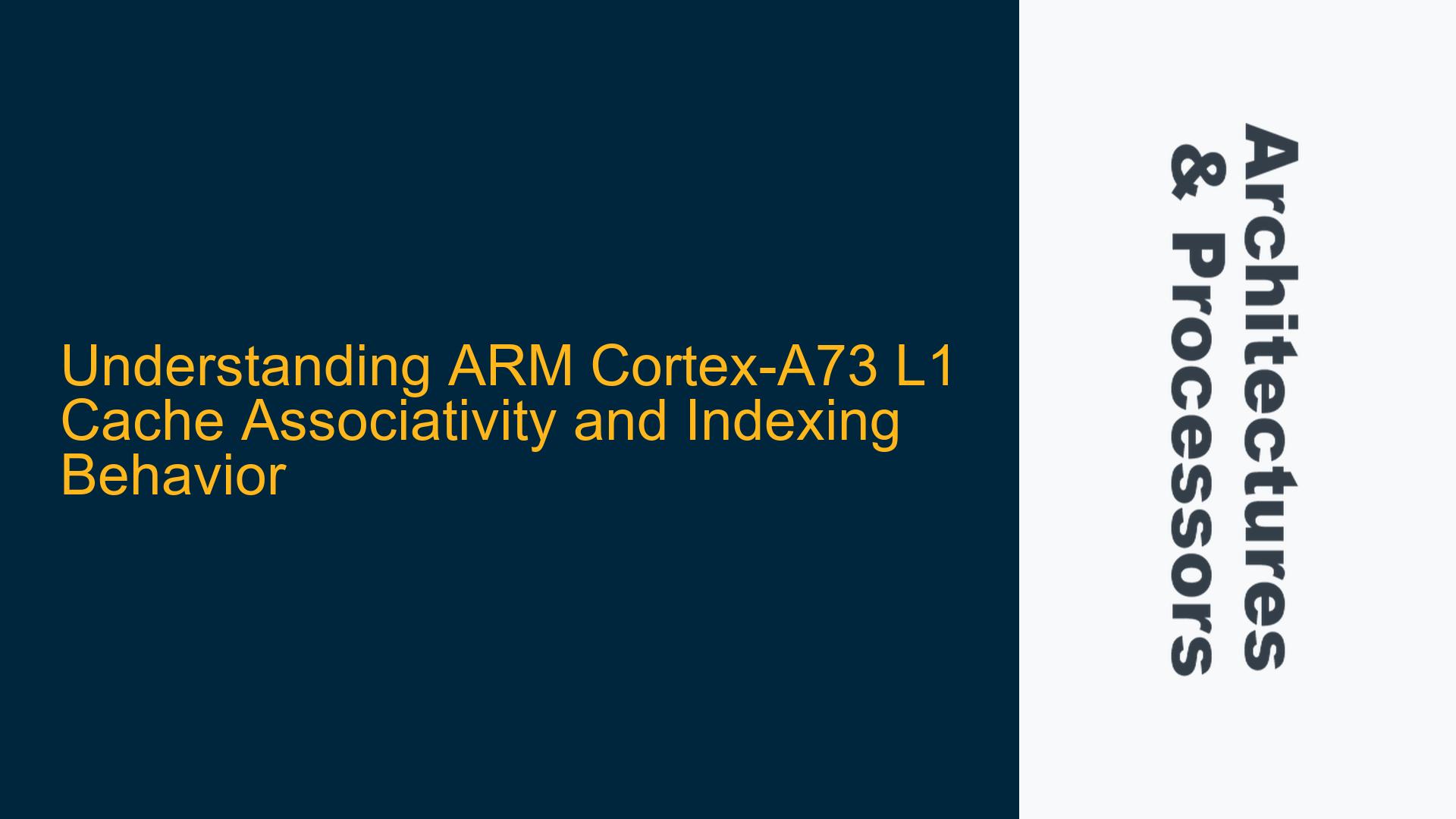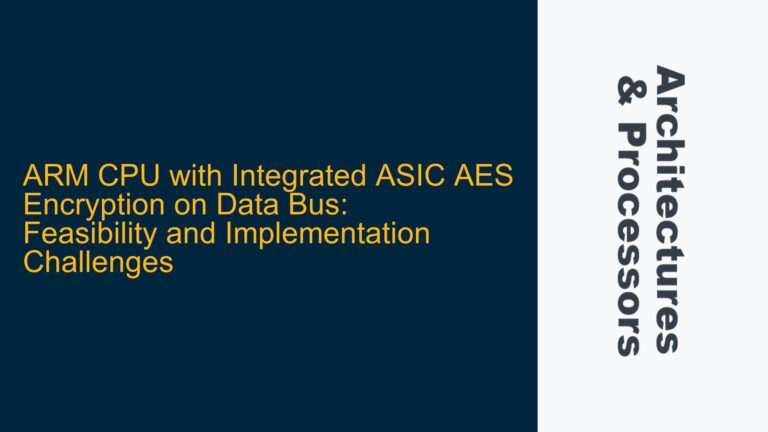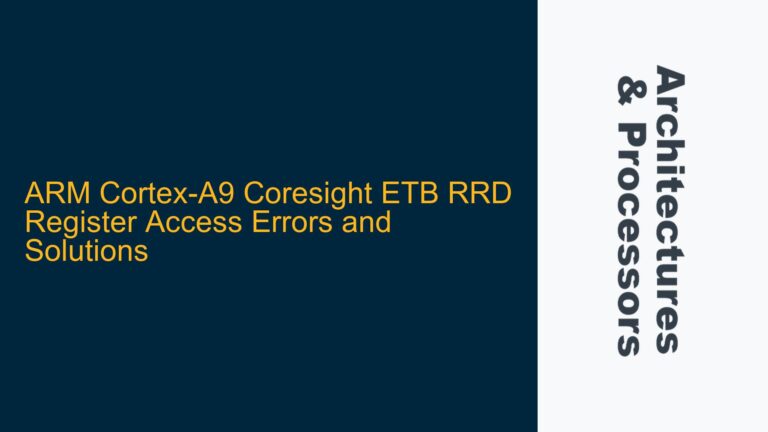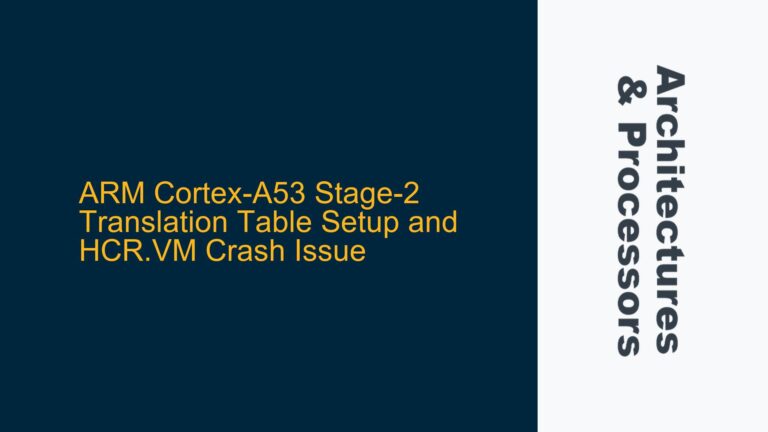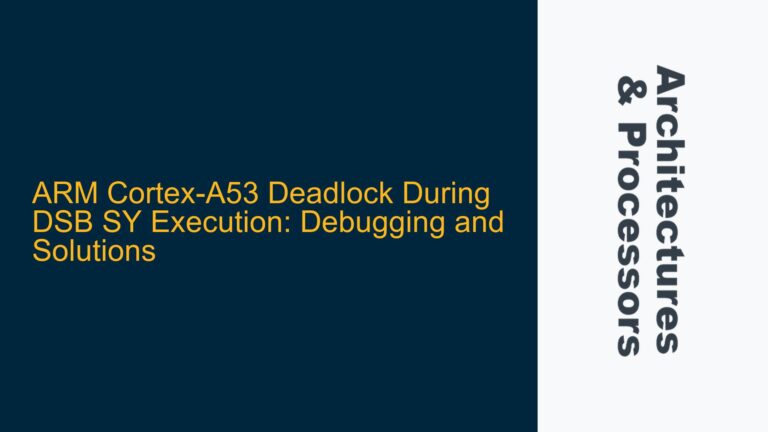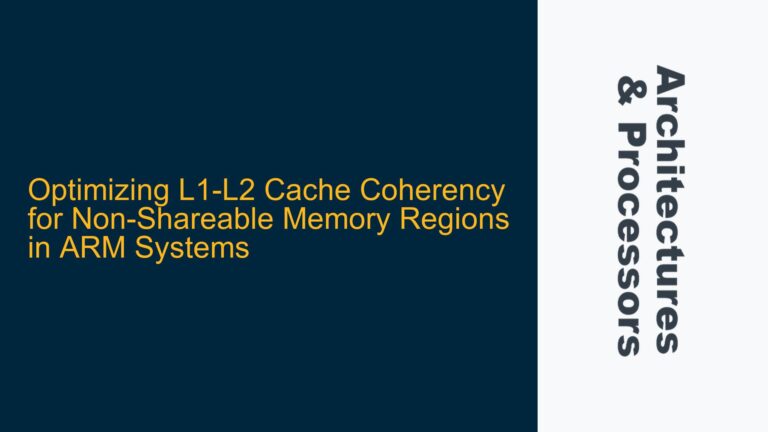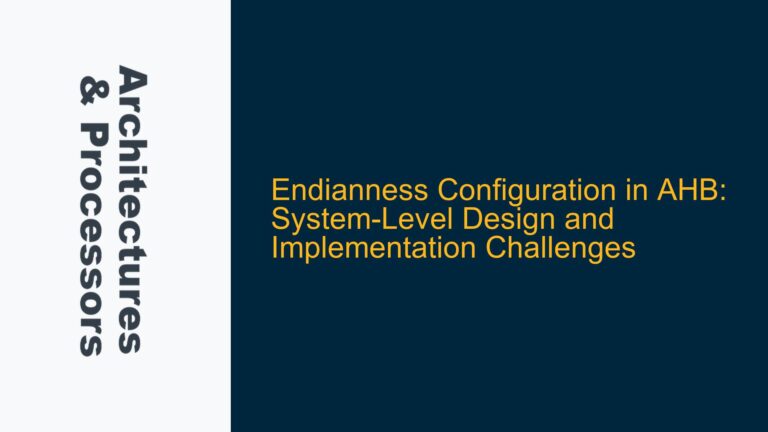ARM Cortex-A73 L1 Cache: VIPT Hardware vs. PIPT Programmer View
The ARM Cortex-A73 L1 data cache is described in the technical documentation as a Virtually Indexed, Physically Tagged (VIPT) cache with a 4-way set-associative structure in hardware. However, the documentation also includes a note stating that, from the programmer’s perspective, the cache behaves as an 8-way set-associative Physically Indexed, Physically Tagged (PIPT) cache for 32KB configurations and a 16-way set-associative PIPT cache for 64KB configurations. This discrepancy between the hardware implementation and the programmer’s view raises several questions about the underlying mechanisms and design choices.
At the hardware level, the Cortex-A73 L1 data cache uses a VIPT organization, which means that the cache index is derived from the virtual address, while the cache tag is derived from the physical address. This approach allows the cache to operate in parallel with the Translation Lookaside Buffer (TLB) lookup, reducing latency. However, VIPT caches can introduce aliasing issues, where multiple virtual addresses map to the same physical address but different cache indices, potentially leading to cache coherence problems.
To address these aliasing issues, ARM has implemented hardware mechanisms that effectively make the cache appear as a PIPT cache to the programmer. This means that the cache behaves as if it is indexed and tagged using physical addresses, eliminating the aliasing problem. Additionally, the associativity of the cache appears to double from the programmer’s perspective, going from 4-way in hardware to 8-way or 16-way in the programmer’s view.
This behavior is achieved through a combination of hardware techniques, including cache line duplication and advanced indexing methods. The result is a cache that maintains the performance benefits of VIPT while providing the simplicity and coherence guarantees of PIPT to the programmer. Understanding these mechanisms is crucial for developers working on performance-critical applications, as it affects how data is accessed and managed in the cache.
Hardware Mechanisms for VIPT to PIPT Transformation
The transformation from a VIPT cache in hardware to a PIPT cache from the programmer’s perspective is achieved through several key hardware mechanisms. These mechanisms are designed to handle the aliasing issues inherent in VIPT caches while maintaining the performance benefits of virtual indexing.
One of the primary techniques used is cache line duplication. In a traditional VIPT cache, aliasing can occur when multiple virtual addresses map to the same physical address but different cache indices. This can lead to multiple cache lines containing the same data, which can cause coherence issues. To prevent this, the Cortex-A73 L1 cache duplicates cache lines when necessary, ensuring that each physical address maps to a single cache line regardless of the virtual address used to access it.
Another important mechanism is the use of advanced indexing methods. The cache index in a VIPT cache is typically derived from the lower bits of the virtual address. However, in the Cortex-A73, the index is modified to take into account the physical address, effectively making the cache behave as if it is physically indexed. This is achieved by incorporating additional bits from the physical address into the cache index, reducing the likelihood of aliasing.
Additionally, the cache includes hardware support for handling synonyms, which are different virtual addresses that map to the same physical address. The cache hardware ensures that all synonyms map to the same cache line, preventing coherence issues. This is done by comparing the physical tags of cache lines and ensuring that only one line is used for each physical address.
These hardware mechanisms work together to create a cache that behaves as if it is physically indexed and tagged from the programmer’s perspective. This simplifies the programming model, as developers do not need to worry about the complexities of VIPT caches, such as aliasing and coherence issues. At the same time, the cache maintains the performance benefits of virtual indexing, such as reduced latency due to parallel TLB and cache access.
Implications for Programmers and Performance Optimization
The behavior of the Cortex-A73 L1 cache has several implications for programmers, particularly those working on performance-critical applications. Understanding how the cache operates from the programmer’s perspective is essential for optimizing code and avoiding performance pitfalls.
One of the key implications is that the cache appears to have higher associativity than it actually does in hardware. For example, a 32KB cache with 4-way associativity in hardware appears as an 8-way associative cache to the programmer. This higher effective associativity reduces the likelihood of cache conflicts, where multiple memory accesses compete for the same cache line. As a result, programmers can expect better cache performance and fewer cache misses, particularly in applications with high memory access locality.
Another implication is that the cache behaves as if it is physically indexed and tagged, which simplifies the programming model. Programmers do not need to worry about the complexities of VIPT caches, such as aliasing and coherence issues. This allows developers to focus on optimizing their code for performance without having to account for the underlying cache architecture.
However, there are still some considerations that programmers should keep in mind. For example, the cache’s behavior can affect the performance of certain memory access patterns. Accessing memory in a way that causes frequent cache line replacements can still lead to performance degradation, even with the higher effective associativity. Programmers should aim to optimize their memory access patterns to minimize cache misses and maximize cache utilization.
Additionally, the cache’s behavior can impact the performance of multi-threaded applications. While the cache hardware handles aliasing and coherence issues, programmers should still be aware of potential contention for cache lines between threads. Proper synchronization and memory access patterns can help mitigate these issues and improve overall performance.
In conclusion, the Cortex-A73 L1 cache’s behavior from the programmer’s perspective provides several benefits, including higher effective associativity and simplified cache management. However, programmers should still be aware of the cache’s characteristics and optimize their code accordingly to achieve the best possible performance. Understanding the underlying hardware mechanisms and their implications is key to unlocking the full potential of the Cortex-A73 L1 cache.
